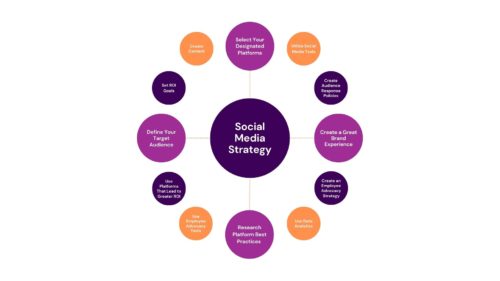
How to Conduct Competitor Analysis When Marketing Law Firms

What is a Competitive Analysis?
A competitive analysis is a process that involves researching your major competitors in order to gain insights into their offerings, client base, and marketing efforts. Taking the time to complete one will yield several benefits, including developing stronger marketing strategies, warding off competitors, and gaining more market share. Essentially, a competitive analysis will help you to learn the ins and outs of marketing law firms, and find opportunities to outperform them and attract new clients. Furthermore, a great competitive analysis will provide information on industry trends and standards.
Some of the other reasons to conduct such an analysis include better narrowing down your firm’s unique value propositions, identifying what your competitors are doing correctly, and learning where other firms are falling short (which can help you to find new opportunities). Many marketers like to understand where other firms have gaps so that they can figure out new ways to meet client needs. These analyses are also valuable when it comes to having benchmarks for measuring your own efforts.
You can see how a competitive analysis might yield different results over time. If the last time you conducted one was five years ago, many things may have changed. There might be new firms in your area, or one has fallen out of favor. The specialties of firms can adapt over time as professionals come and go. Plus, client needs change over time and their demands might be different, in addition to new and evolving digital platforms.
How to Complete an Impactful Competitive Analysis
Hopefully, you’re convinced that it’s a good time to conduct a new competitor analysis – even if you have completed one before. To run a complete analysis to help with marketing law firms, follow these steps.
1. Know Who Your Competitors Are
You won’t get very far if you’re not even sure who you’re researching. Who are you really competing with? Start by dividing competitors into “direct” and “indirect”. Direct competitors operate in a similar space and in your geographic area. Indirect competitors provide services that are not the same, but could also address your clients’ needs. For analysis purposes, you want to work with only direct competitors. That being said, maintain a list of indirect competitors to keep on your radar in case their area of focus changes.
2. Learn Which Services Your Competitors Offer
Start by analyzing the solutions offered by your competitors and trying to get a feel for the quality of services. Take note of their pricing structure or any discounts offered. Are they a low-cost or high-cost provider in the market? What is their market share? Who are their ideal clients and what are their characteristics? What is the firm doing to differentiate from others in your market?
3. Research Other Firms’ Business Development Tactics (and results)
You won’t always be able to get robust business development information on your competitors. However, you want to do your best to find out things like:
- What is their business development process?
- Which channels do they focus on for lead generation?
- Do they have multiple locations and is that a positive thing?
- Do they seem to be expanding?
- What are their revenues each year?
- How involved are business development professionals in the process?
What you are ultimately looking for is how competitive the process is to sign on clients, so you can arm your business development team with what they need to win. For publicly held law firms, you can find information in annual reports online. It’s a little trickier for private firms. Don’t be afraid to talk to clients who mentioned that they also spoke to other firms. Get some feedback on how things worked and why they chose your firm. Additionally, ask your business development team to provide any information they may have gained from various meetings and conversations in competitive scenarios. Your business development team is a great resource for getting some of this hard-to-quantify information for marketing law firms.
4. Document Pricing and Perks
It’s essential to know what your competitor’s rates are so that you can set yours appropriately. Pricing too high or too low will leave a lot of opportunity on the table. Some firms find that there is a gap in the market for affordable attorneys and are able to set up a pricing structure accordingly. Or, you may feel that your services are superior to others in the space. In this case, you can charge higher rates, but your business development team needs to be able to explain the rates. There are a lot of factors that go into pricing, but knowledge of the industry rates should be one of them.
5. Evaluate Your Competitors’ Marketing
One of the best ways to evaluate other firms’ marketing efforts is to review their website. In particular, look for these things:
- A blog
- Thought leadership like white papers, slide decks, or ebooks
- Video or webinar content
- A podcast
- Visual content like infographics
- Press releases or media kit
- Case studies, testimonials, and reviews
6. Look for a Content Strategy
What can you glean from your competitor’s content? Start by seeing if there is an intentional effort. Are they maintaining a blog? Do they post regular articles or just sporadic items? What are they doing as far as video? What is the frequency of posting and are they consistent? Then, take a look at the topics. If there is a trove of content around a certain topic, you can assume your audience is interested in this particular subject. This can give you some ideas for new content and lead-generation material. From there, you want to evaluate the quality of content and see where you can improve. As part of this process, take a look at the graphics or photos that are being used, along with the written portions to gain insight into how to be successful when marketing law firms.
7. Investigate Social Media Presence
If you’re evaluating marketing, make sure to take the time to review social media. Which channels are firms using, and where is their engagement highest? What is the brand doing to drive engagement on social media? What are they doing to promote their social media presence in other areas, such as via a footer in content? What sort of calls-to-action do they use? If you notice that other firms are on platforms that you’re not, those spaces may be worth investigating. As part of this process, visit each of the major social media channels and document the number of fans/followers, posting frequency and consistency, and content engagement and virality.
8. Figure Out What Technology Stack Other Firms Use
Knowing what technology your competitors are using can help you increase momentum in your own efforts. For example, if it appears that your biggest competitor has a successful social media presence, you may want to know if they are using a third-party system to manage it. Similarly, knowing if they use marketing automation or what CRM they use is beneficial. Start by running a search on Built With where you can see what the website is built on, along with other plugins and extensions.
9. Gauge the Level of Engagement on Competitor Content
It’s helpful to understand how your target audience is responding to the content that other firms publish. This can give you an idea of not only the general following of the firm but which topics are most important to prospective clients. Review the number of comments, likes, and shares, and see which items are generating conversations. Are the comments positive, negative, or a mix? Is there a higher level of engagement on certain channels? See what you can learn based on the engagement present with their content.
10. See How Competitors Promote Their Content
In addition to reviewing content engagement, try to figure out which channels they focus on for promoting their content. Chances are, your audience is also present on those channels. Look for things like:
- Keyword density in content copy
- Image, alt, and text tags
- Use of internal linking
- Backlinks
- Viral or highly shared content
- Referral traffic
If they also appear to be targeting keywords that you focus on, investigate the difficulty level. There are several tools that can be used to conduct a robust evaluation of your competitor’s search engine optimization tactics.
11. Perform a SWOT Analysis
As you go through these steps for each major competitor, take things a step further and complete a simple SWOT (strengths, weaknesses, opportunities, threats) analysis at the same time. It doesn’t need to be overly complex, but you’ll want to make note of things like:
- What the competitor is doing well
- Where competitors have an advantage over your firm
- Which area is the weakest
- Areas where your firm has the advantage over competitors
- Areas where this competitor is a particular threat
- Opportunities that your competitors have appeared to identify
Takeaway:
Taking an objective look at your competitors will inform many aspects of your marketing, from effective social media channels to gaps in messaging and more. The important thing is to take the time to complete this process thoroughly and accurately – and many marketers simply don’t have the time to complete this process correctly. If you need some support with this type of strategy work, reach out to our experts. Our digital marketing strategy professionals can create a roadmap for getting exactly where you want to go. Contact us today for a free consultation.
Are you ready to get started generating new, qualified leads?
Contact us to get started and let us help you energize your digital marketing and business development efforts.
Contact Us


